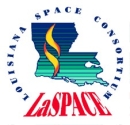



Payload 07 Information
Payload Flight Number:
Institution:
Payload Title:
Measurements of Good and Bad Ozone..
Student Leader:
Faculty Advisor:
Payload class:
Small
Payload ID Number:
07
Mass:
Current:
Serial Downlink:
Analog Downlink:
Serial Commands:
Discrete Commands:
Payload Specification & Integration Plan
Due: 06/22/2018
Delivered:
Payload Integration Certification
Scheduled: 07/27/2018
Actual:
Flight Operation Plan
Due: 07/19/2018
Delivered:
Final Flight / Science Report
Due: 12/07/2018
Delivered:
Abstract:
UNF-UND team have successfully flown payloads on the NASA-HASP balloon flights since 2008 and measured the ozone gas profile in the stratosphere. Based on the success and experience of previous flights and observation of interesting larger ozone peak in troposphere after termination of HASP2017 flight, the UNF-UND team proposes the HASP 2018 flight for the development of new improved version of ozone sensors and payload to measure good ozone profile in the stratosphere and bad ozone in the troposphere. In addition, we will explore the measurements of nocturnal ozone maxima before launching of the flight during early morning as well as in the troposphere after termination of flight at night time. Three different types of ozone sensors boxes made by three different types of materials will be mounted on the three sides of rectangular payload body. Each sensor box will have 8 ozone gas sensors array. Ozone gas sensors will be fabricated and calibrated by the students’ team at UNF and will also tested at UND. The UV light photodiode will be mounted just below ozone gas sensors box to measure amount of photovoltage generated by UV light, which will support the science concept of generation of ozone gas in the presence of UV light. This proposed HASP2018 flight science experiment will help us understanding good ozone in stratosphere, bad ozone in troposphere and any possible observation of higher concentration of ozone due to nocturnal ozone maxima after termination of flight at night time
Payload Application:
02_UNF-UND_HASP2018_Flight_Appliation.pdf 07_UNF-UND_Application_Review_Response.docx
Payload Integration Plan:
|